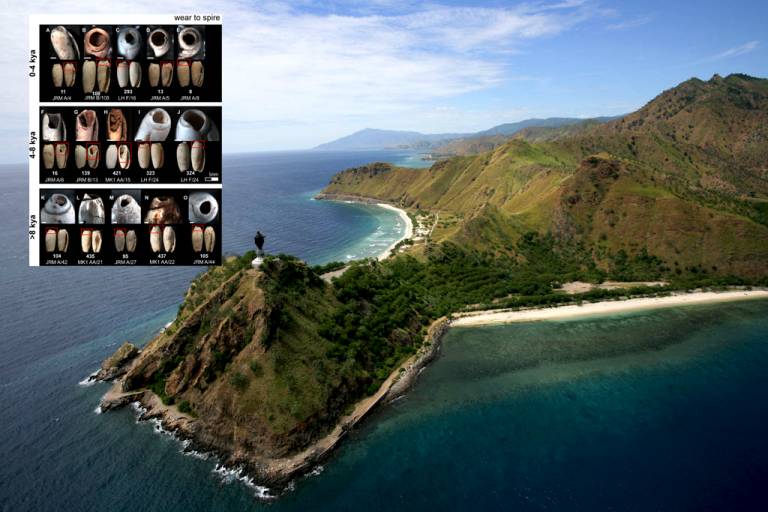Team of Archaeologists find seashell beads were modified to be strung as necklaces
24 August 2016
A team of Archaeologists describe 485 Oliva spp.
 shell beads recovered from four archaeological cave sites Jerimalai, Lene Hara, Matja Kuru 1, and Matja Kuru 2, located in Timor-Leste, Island Southeast Asia. While Pleistocene-aged examples of modified marine shells used for personal ornamentation are common in African and Eurasian assemblages, they are exceedingly rare in Southeast Asia, leading some researchers to suggest that these Modern Human societies were less complex than those found further west. In Timor-Leste, the lowest Oliva bead to be recovered was directly dated to ca. 37,000 cal. BP, making it the oldest piece of personal ornamentation in Southeast Asia. Morphometric, taphonomic, use wear, and residue analyses of these beads alongside modern reference specimens, and experimentally made examples indicate that the Oliva shells were modified to be strung consecutively (as in a necklace), and while their mode of production changed remarkably little over the thousands of years they were utilised, an increase in their deposition around 6,000 cal. BP suggests that there was a change in their use coinciding with sea-level stabilisation. These tiny beads demonstrate that early Island Southeast Asian societies produced the same kinds of symbolic material culture we have come to expect from the more intensively studied African/Eurasian region, and that limited sampling and poor recovery methods have biased our perspectives of this region.
shell beads recovered from four archaeological cave sites Jerimalai, Lene Hara, Matja Kuru 1, and Matja Kuru 2, located in Timor-Leste, Island Southeast Asia. While Pleistocene-aged examples of modified marine shells used for personal ornamentation are common in African and Eurasian assemblages, they are exceedingly rare in Southeast Asia, leading some researchers to suggest that these Modern Human societies were less complex than those found further west. In Timor-Leste, the lowest Oliva bead to be recovered was directly dated to ca. 37,000 cal. BP, making it the oldest piece of personal ornamentation in Southeast Asia. Morphometric, taphonomic, use wear, and residue analyses of these beads alongside modern reference specimens, and experimentally made examples indicate that the Oliva shells were modified to be strung consecutively (as in a necklace), and while their mode of production changed remarkably little over the thousands of years they were utilised, an increase in their deposition around 6,000 cal. BP suggests that there was a change in their use coinciding with sea-level stabilisation. These tiny beads demonstrate that early Island Southeast Asian societies produced the same kinds of symbolic material culture we have come to expect from the more intensively studied African/Eurasian region, and that limited sampling and poor recovery methods have biased our perspectives of this region.
An Enduring Shell Artefact Tradition from Timor-Leste: Oliva Bead Production from the Pleistocene to Late Holocene at Jerimalai, Lene Hara, and Matja Kuru 1 and 2
Michelle C. Langley and Sue O'Connor
DOI: 10.1371/journal.pone.0161071
 Close
Close

